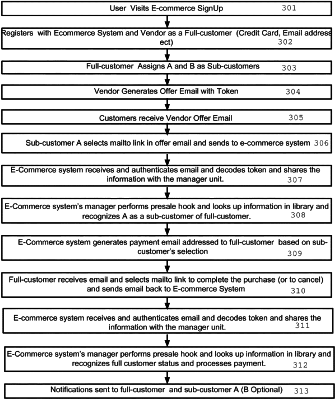| CPC G06Q 20/405 (2013.01) [G06Q 10/107 (2013.01); G06Q 20/3255 (2013.01); G06Q 20/425 (2013.01)] | 20 Claims |

|
1. A method improving security of a computer network by restricting access to a secure webpage utilizing Simple Mail Transfer Protocol (SMTP), the method comprising:
receiving an authentication request, wherein the authentication request includes a request to access an authentication Uniform Resource Location (URL) that is associated with the secure webpage;
generating a link to the authentication URL, wherein the link contains a new authentication token;
transmitting, using SMTP, an authentication message to a registered user, wherein the authentication message includes the link to the authentication URL;
receiving a request to access the authentication URL in response to activation of the link, wherein the request to access the authentication URL includes the new authentication token;
granting access to the secure webpage associated with the authentication URL based on the new authentication token received, wherein access to the secure webpage requires a valid authentication token; and
invalidating any authentication tokens associated with the registered user other than the new authentication token in response to the granting access to the secure webpage associated with the authentication URL thereby restricting the access to the secure webpage to only the new authentication token.
|